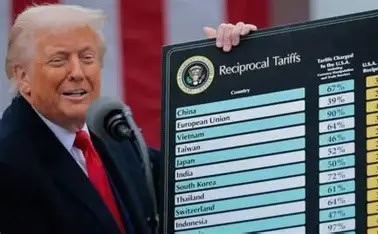USA News
Reciprocal Tariffs Take Effect: What US Eye Care Professionals Need to Know
 Reciprocal Tariffs Take Effect: What Eye Care Professionals Need to Know
Reciprocal Tariffs Take Effect: What Eye Care Professionals Need to Know
The Vision Council released a statement outlining the tariff rates, and the potential of creating ripple effects throughout the global optical supply chain—particularly in sourcing, pricing, and logistics strategies. The Vision Council said it is aiming to provide tools, data, and advocacy to help eye care professionals adapt to this evolving landscape.
 A Closer Look: New Tariff Structure by Country
A Closer Look: New Tariff Structure by Country
The Executive Order outlines reciprocal tariff rates ranging from 15% to 41%, depending on the country and product type. Unlisted countries will default to a 10% reciprocal rate.
-
China, the largest exporter of frames, lenses, and eyewear accessories to the U.S., will maintain a 10% reciprocal tariff for now, with additional changes pending August 12 based on ongoing trade negotiations
-
European Union, Japan, Taiwan, and Vietnam face new rates between 15% and 20%, impacting a wide array of products including plastic frames and high-end lenses
-
India faces a 25% reciprocal tariff
-
Brazil is subject to 10% reciprocal and a 40% retaliatory tariff
-
Mexico and Canada are impacted under IEEPA measures, with Canada now at 35% (effective August 1) and Mexico granted a 90-day extension of its current 25% rate
The de minimis provision that allowed duty-free importation of shipments valued under $800 will end August 29, 2025, potentially increasing costs for small batch orders.
Impact on Core Optical Product Categories
The Vision Council has identified three core product categories that are likely to feel the most significant impact:
1. Sunglasses
-
China accounts for 89% of U.S. imports in this category
-
With China’s tariffs still under negotiation, sourcing uncertainty looms large
-
Italy (5%), Taiwan (3%), and Japan (1%) will see tariffs from 15% to 20%
2. Plastic Frames and Mountings
-
China supplies 72% of U.S. imports
-
Vietnam (6%), Taiwan (4%), Japan (3%), and Italy (9%) will all face new tariffs from 15% to 20%
-
Procurement teams should expect complex supply chain decisions as sourcing diversification becomes essential
3. Non-glass Lenses
-
Mexico leads with 26%, though most goods remain tariff-free under USMCA
-
China (19%), Thailand (15%), Indonesia (12%), and Laos (8%) face substantial new rates, with Laos at 40%—a significant disruptor
“The Vision Council is stepping forward to help members understand the implications of the latest reciprocal tariffs and advocate for sustainable solutions,” said Ashley Mills, CEO of The Vision Council. “These measures place new pressures on businesses—especially smaller and independent practices—and we are committed to offering actionable insights and support.”























